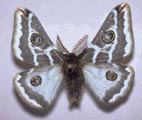Native Plants
Search for native plants by scientific name, common name or family. If you are not sure what you are looking for, try the Combination Search or our Recommended Species lists.
Salix exigua
Salix exigua Nutt.
Narrowleaf Willow, Narrow-leaf Willow, Sandbar Willow, Coyote Willow
Salicaceae (Willow Family)
Synonym(s): Salix argophylla, Salix columbiana, Salix exigua var. angustissima, Salix exigua var. columbiana, Salix exigua var. hindsiana, Salix exigua var. luteosericea, Salix exigua var. nevadensis, Salix exigua var. parishiana, Salix exigua var. stenophylla, Salix exigua var. virens, Salix fluviatilis var. argophylla, Salix hindsiana, Salix hindsiana var. leucodendroides, Salix hindsiana var. parishiana, Salix hindsiana var. tenuifolia, Salix interior var. angustissima, Salix interior var. luteosericea, Salix linearifolia, Salix longifolia var. argophylla, Salix longifolia var. exigua, Salix longifolia var. opaca, Salix luteosericea, Salix macrostachya var. leucodendroides, Salix malacophylla, Salix nevadensis, Salix parishiana, Salix sessilifolia ssp. hindsiana, Salix sessilifolia var. hindsiana, Salix sessilifolia var. leucodendroides, Salix stenophylla, Salix thurberi
USDA Symbol: saex
USDA Native Status: L48 (N), CAN (N)
A small, clumping, deciduous shrub or tree, usually from 4-15 ft. tall. The bark is gray and furrowed; the leaves silky-gray. Catkins appear after the leaves.
This hardy species has perhaps the greatest range of all tree willows: from the Yukon River in central Alaska to the Mississippi River in southern Louisiana. A common and characteristic shrub along streams throughout the interior, especially the Great Plains and Southwest, it is drought-resistant and suitable for planting on stream bottoms to prevent surface erosion. Livestock browse the foliage; Indians made baskets from the twigs and bark.
Plant Characteristics
Duration: PerennialHabit: Shrub
Leaf Retention: Deciduous
Leaf Arrangement: Alternate
Leaf Complexity: Simple
Fruit Type: Capsule
Size Notes: Up to about 55 feet tall, usually much shorter.
Leaf: Green
Bloom Information
Bloom Color: White , YellowBloom Time: Mar , Apr , May , Jun , Jul
Distribution
USA: AZ , CA , CO , ID , MT , NE , NM , NV , OR , TX , UT , WA , WYCanada: AB , BC , ON
Native Distribution: Cismontane CA to OR
Native Habitat: Along ditches & sandbars mostly below 3000 ft.
Growing Conditions
Water Use: HighLight Requirement: Sun , Part Shade
Soil Moisture: Moist , Wet
CaCO3 Tolerance: High
Soil Description: Wet sandy gravels.
Conditions Comments: Excellent for stream stabilization as the plant suckers profusely.
Value to Beneficial Insects
Special Value to Native BeesSupports Conservation Biological Control
This information was provided by the Pollinator Program at The Xerces Society for Invertebrate Conservation.
Butterflies and Moths of North America (BAMONA)
|
Rocky Mountain agapema (Agapema homogena)  Adult Food Source |
Propagation
Description: Willows are among the easiest of all plants to root from cuttings. Stem and root cuttings are used. Propagation is also accomplished by sowing fresh, untreated seed onto a moist seedbed. Seed viability lasts only a few days.Seed Treatment: No treatment is necessary.
Commercially Avail: yes
Find Seed or Plants
View propagation protocol from Native Plants Network.
National Wetland Indicator Status
| Region: | AGCP | AK | AW | CB | EMP | GP | HI | MW | NCNE | WMVE |
| Status: | FACW | FACW | FACW |
From the National Organizations Directory
According to the species list provided by Affiliate Organizations, this plant is on display at the following locations:Santa Barbara Botanic Garden - Santa Barbara, CA
Texas Discovery Gardens - Dallas, TX
Sibley Nature Center - Midland, TX
Bibliography
Bibref 1186 - Field Guide to Moths of Eastern North America (2005) Covell, C.V., Jr.Bibref 1185 - Field Guide to Western Butterflies (Peterson Field Guides) (1999) Opler, P.A. and A.B. Wright
Search More Titles in Bibliography
Web Reference
Webref 38 - Flora of North America (2019) Missouri Botanical Garden, St. Louis, MO & Harvard University Herbaria, Cambridge, MA.Webref 23 - Southwest Environmental Information Network (2009) SEINet - Arizona Chapter
Additional resources
USDA: Find Salix exigua in USDA PlantsFNA: Find Salix exigua in the Flora of North America (if available)
Google: Search Google for Salix exigua
Metadata
Record Modified: 2023-05-16Research By: TWC Staff